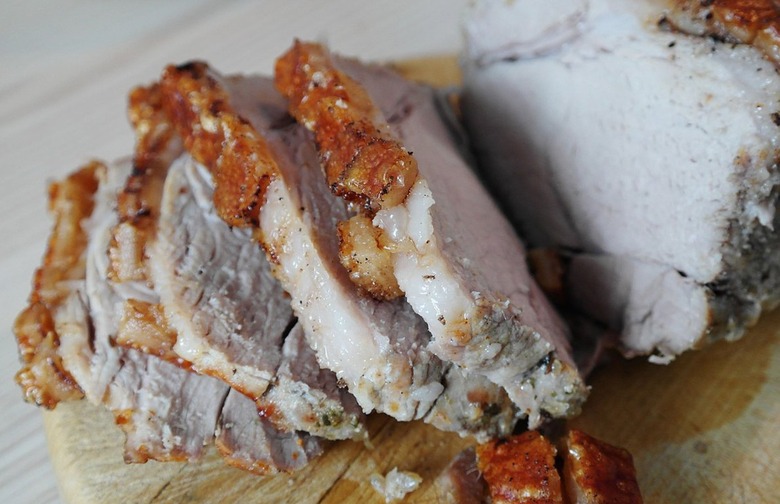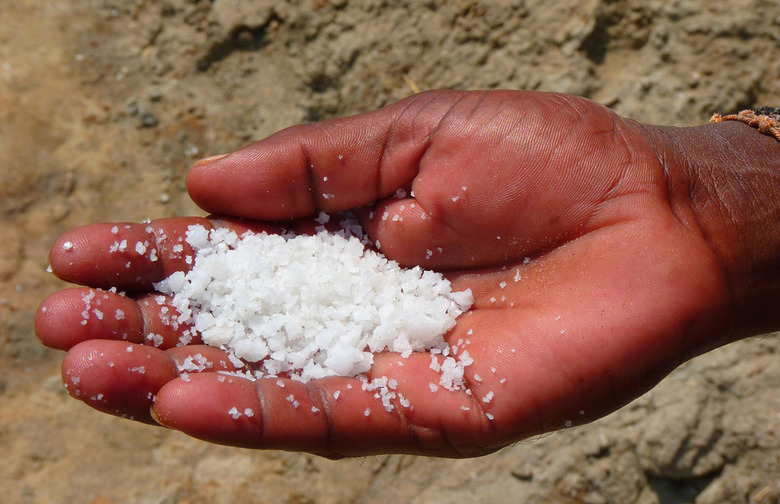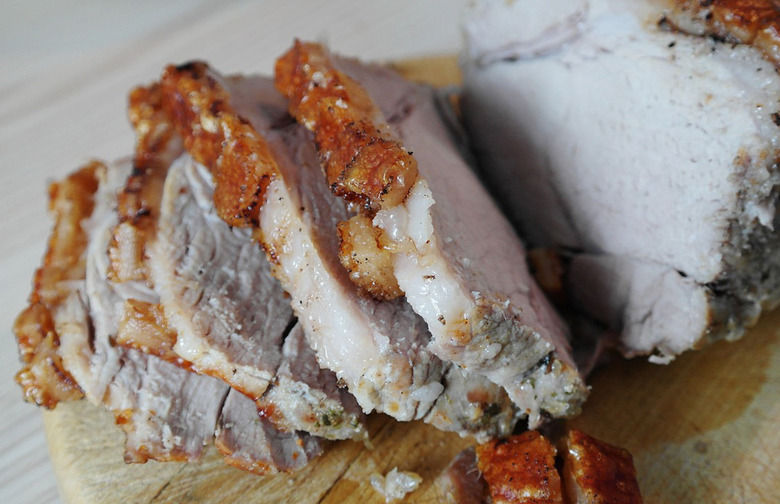8 Times Wars Weirdly Started (Or Almost Started) Over Food (Slideshow)
The Grattan Fight/The First Sioux War
On August 17, 1854, a cow belonging to a Mormon traveling on the Oregon Trail strayed and was killed and eaten by a member of the Miniconjou tribe (a subdivision of the Lakota Sioux) near Fort Laramie, in what is now Wyoming. Instead of waiting for a local Indian Agent to settle the dispute (as per regulations of the Treaty of 1851), a trigger-happy recent graduate of West Point, Lt. John Lawrence Grattan, brought 28 soldiers to confront the local Sioux, who was hosting the visiting Miniconjou, and demand that the miscreant be delivered to them. Discussions quickly escalated, and a jumpy soldier fired his gun, mortally wounding the tribal chief. The Sioux attacked, killing all 29 soldiers. The First Sioux War, which ensued, lasted for two years, but some historians suggest that almost a quarter of a century of battles between local tribes and the U.S. military were set off by the Grattan incident.
The Great Emu War
No, this war was not fought over emus — it was fought against them. In 1932, Australian farmers complained that over 20,000 emus had infiltrated their fields and were consuming their crops. In response, Major G.P.W. Meredith of the Royal Australian Artillery and two soldiers armed with machine guns embarked on a six-week campaign to rid the region of the flightless birds. Despite firing almost 10,000 rounds, the soldiers proved no match for the emus, who, capable of running over 50 mph, were faster even than the trucks on which the guns were mounted. The week-long effort was later viewed as both a failure and a laughingstock, with many of the birds even surviving being directly struck by gunfire. Major Meredith later stated, "If we had a military division with the bullet-carrying capacity of these birds, it would face any army in the world. They can face machine guns with the invulnerability of tanks."
The Honey War
Back in the 1830s, a territorial dispute arose when Missouri tax collectors ventured into the border region between their state and what is now Iow (then part of the Wisconsin Territory), and discovered a dispute over where the dividing line was between the two. Denied the taxes they believed were owed, the Missourians cut down three trees and collected the honey therin instead. A mob of Iowans in turn captured and jailed a Missouri sheriff , and both sides lined up in the border region, ready for battle. Thankfully, the two governors involved agreed to have the issue resolved by Congress before any shots were fired, and the sheriff was released.
The Pastry War
As a result of conflict between the new Mexican government and warring factions competing for control, four days of fighting in Mexico City in 1828 resulted in widespread destruction and looting. One of the victims of the violence was a French chef named Remontel, who claimed that Mexican officers destroyed his pastry shop, and demanded an immensely-inflated 600,000 pesos in damages. The issue fizzled out, but more than a decade later, it was brought to the attention of King Louis-Philippe of France, who was already furious over Mexico's outstanding debts to his country. After the Mexican government balked at the king's request for them to compensate Remontel, France sent a naval fleet to blockade all Mexican ports from Yucatán to the Rio Grande. War was declared by Mexico, and the two sides fought for nearly four months, at the cost of about 100 lives, before British diplomatic intervention resulted in a resolution — which included the condition that Mexico's president repay the baker's 600,000 pesos.
The Pig War
Although the Oregon Treaty of 1846 was supposed to resolve a boundary dispute in the Pacific Northwest, vague language led to a disagreement over San Juan Island, located between the U.S. mainland and Vancouver Island, British Columbia. With both America and England claiming sovereignty, the latter sent the Hudson's Bay Company to turn the island into a sheep ranch, while at the same time, American settlers began moving into the region. On June 15, 1859, an American farmer found a pig nosing through his vegetable garden and shot it, only later discovering that the pig belonged to an employee of the Hudson's Bay Company. A monetary argument ensued, which eventually culminated in the Americans sending 461 soldiers to San Juan Island, and the British sending five warships. It soon became clear that neither side was willing to take the first shot, but the stalemate still lasted until 1872, when an arbitration committee finally ruled in favor of the United States. The war's only casualty? The poor pig that unintentionally started it all.
The Pork and Beans War
Also known as the Aroostook War, the Pork and Beans War was a military confrontation between the United States and Britain over the border of Maine, which actually may have been defused due to food, rather than caused by it. Following the War of 1812, British troops still laid claim to the eastern part of the state, despite not having any troops there. When American lumberjacks cut down firewood in the area in 1838, England sent soldiers in response, and were greeted by American troops. Just when war seemed imminent, the conflict was derailed by logistics — most notably, as legend has it, an incident allegedly occurred where Americans soldiers were expecting to receive a key shipment of arms, but instead received crates containing enormous amounts of pork and beans due to a shipping error. During the stalemate, the British government eventually agreed to give the land back to America, and the war ended without any exchange of fire — unfortunately, hundreds of soldiers in the area still died due to disease.
The Salt War
In the fifteenth century, in what later became Italy, border conflicts between various states were common — but there was also competition over the region's salt trade, which was reserved to Venice via a commercial pact. Nevertheless, the neighboring state of Ferrara (led by Duke Ercole I d'Este) had slowly began taking over the saltworks at Comacchio, located within its borders. Tensions mounted until war was declared in 1481 and Venetian troops attacked Ferrarese territory and overran Comacchio. The Salt War, more correctly called the War of Ferrara, eventually spread to neighboring states, and continued until the Treaty of Bagnolo was signed on August 7, 1484, with Venice victorious.
The Serbian Pork War
In the early twentieth century, the Kingdom of Serbia's major export was pork, most of which went to the Austro-Hungarian Empire, of which it was an economic satellite. In an attempt to weaken the economic and political control the empire wielded, Serbia began trading with other nations, and was punished with economic sanctions by Austria, who refused to import Serbian pork beginning in 1906. The plan backfired when Serbia found other buyers, and an incensed Austria threatened war against the small nation's new trade allies, which included France and Russia. An intervention by Germany eventually squashed the war in 1909, but just a few years later, Austria and Serbia were back at it, in a conflict that eventually contributed to the start of World War I.








